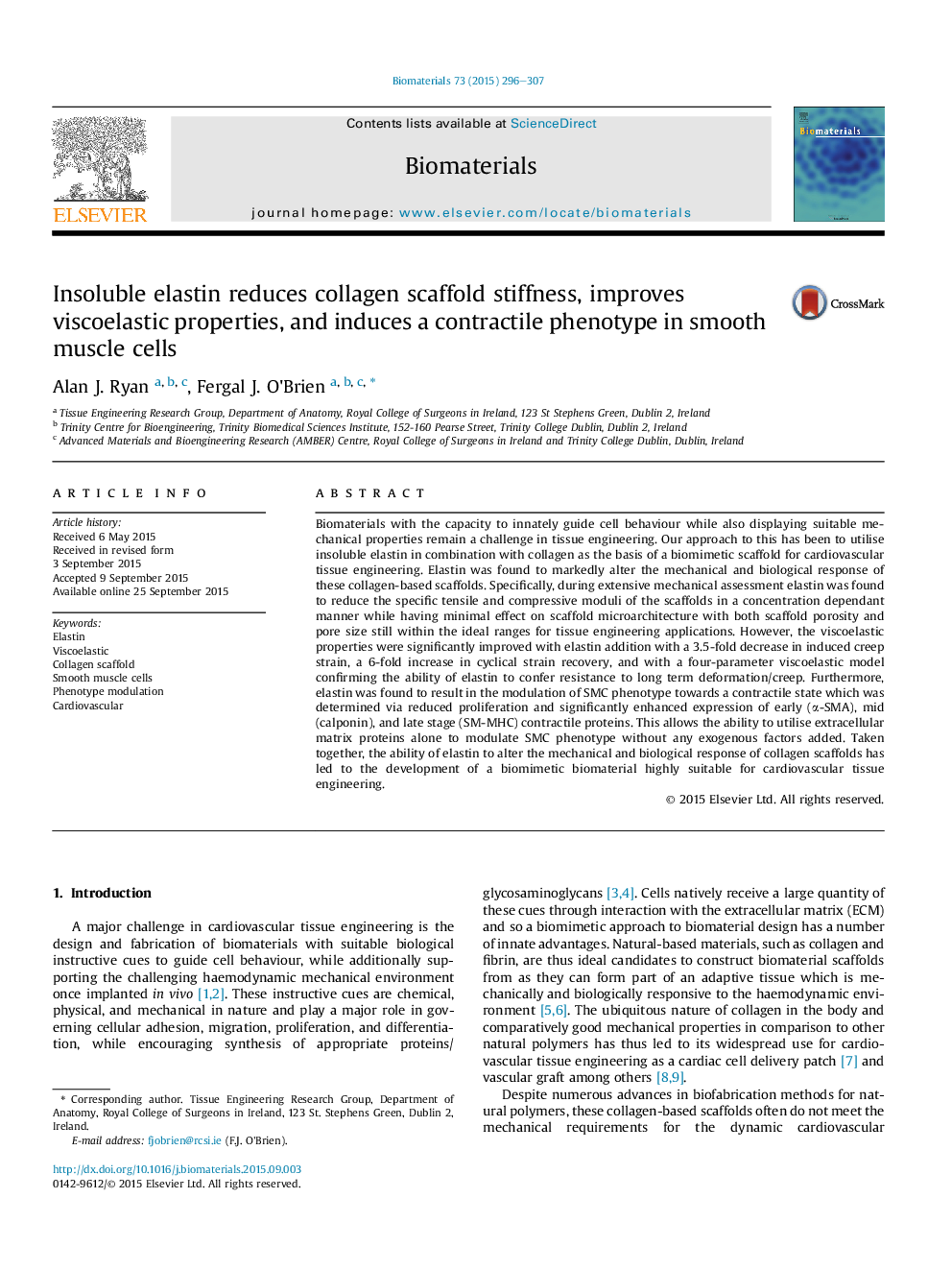| کد مقاله | کد نشریه | سال انتشار | مقاله انگلیسی | نسخه تمام متن |
|---|---|---|---|---|
| 5528 | 397 | 2015 | 12 صفحه PDF | دانلود رایگان |
Biomaterials with the capacity to innately guide cell behaviour while also displaying suitable mechanical properties remain a challenge in tissue engineering. Our approach to this has been to utilise insoluble elastin in combination with collagen as the basis of a biomimetic scaffold for cardiovascular tissue engineering. Elastin was found to markedly alter the mechanical and biological response of these collagen-based scaffolds. Specifically, during extensive mechanical assessment elastin was found to reduce the specific tensile and compressive moduli of the scaffolds in a concentration dependant manner while having minimal effect on scaffold microarchitecture with both scaffold porosity and pore size still within the ideal ranges for tissue engineering applications. However, the viscoelastic properties were significantly improved with elastin addition with a 3.5-fold decrease in induced creep strain, a 6-fold increase in cyclical strain recovery, and with a four-parameter viscoelastic model confirming the ability of elastin to confer resistance to long term deformation/creep. Furthermore, elastin was found to result in the modulation of SMC phenotype towards a contractile state which was determined via reduced proliferation and significantly enhanced expression of early (α-SMA), mid (calponin), and late stage (SM-MHC) contractile proteins. This allows the ability to utilise extracellular matrix proteins alone to modulate SMC phenotype without any exogenous factors added. Taken together, the ability of elastin to alter the mechanical and biological response of collagen scaffolds has led to the development of a biomimetic biomaterial highly suitable for cardiovascular tissue engineering.
Journal: Biomaterials - Volume 73, December 2015, Pages 296–307
